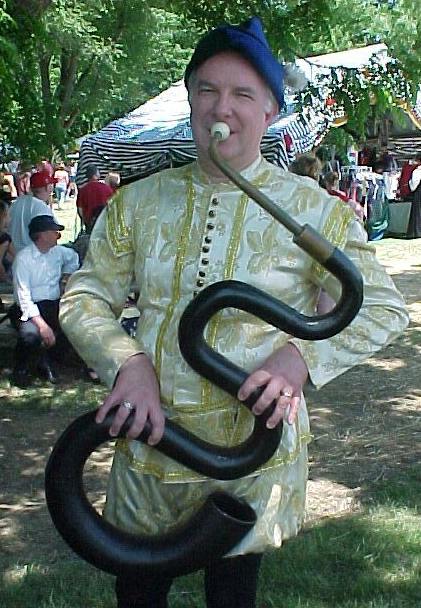
 |
The euphonium’s
earliest ancestor is generally thought to have been an instrument known
as the serpent. Deriving its name from its snake-like shape, the serpent
was constructed of either wood , brass, or silver and played with a
deep-cup mouthpiece made of horn or ivory. One buzzed the lips into the
deep-cup mouthpiece like modern brass instruments to produce the sound. A serpent had
six finger holes to change pitches. There were different sizes of serpents as you can see in the above image. Larger sized once played lower and smaller ones played higher. The serpent was in use for over three hundred years. At first in was exclusively used as accompanist for choirs. Later the serpent was a member of the cornetto family in military and civic bands in France, Belgium, and England.1 A serpent player had to have had an excellent sense of pitch because the intonation of the instrument was a serious problem. One musicologist of the time even compared its tone to that of a "great hungry or rather angry Essex calf." Here is a great example of what a serpent would have sounded like. |